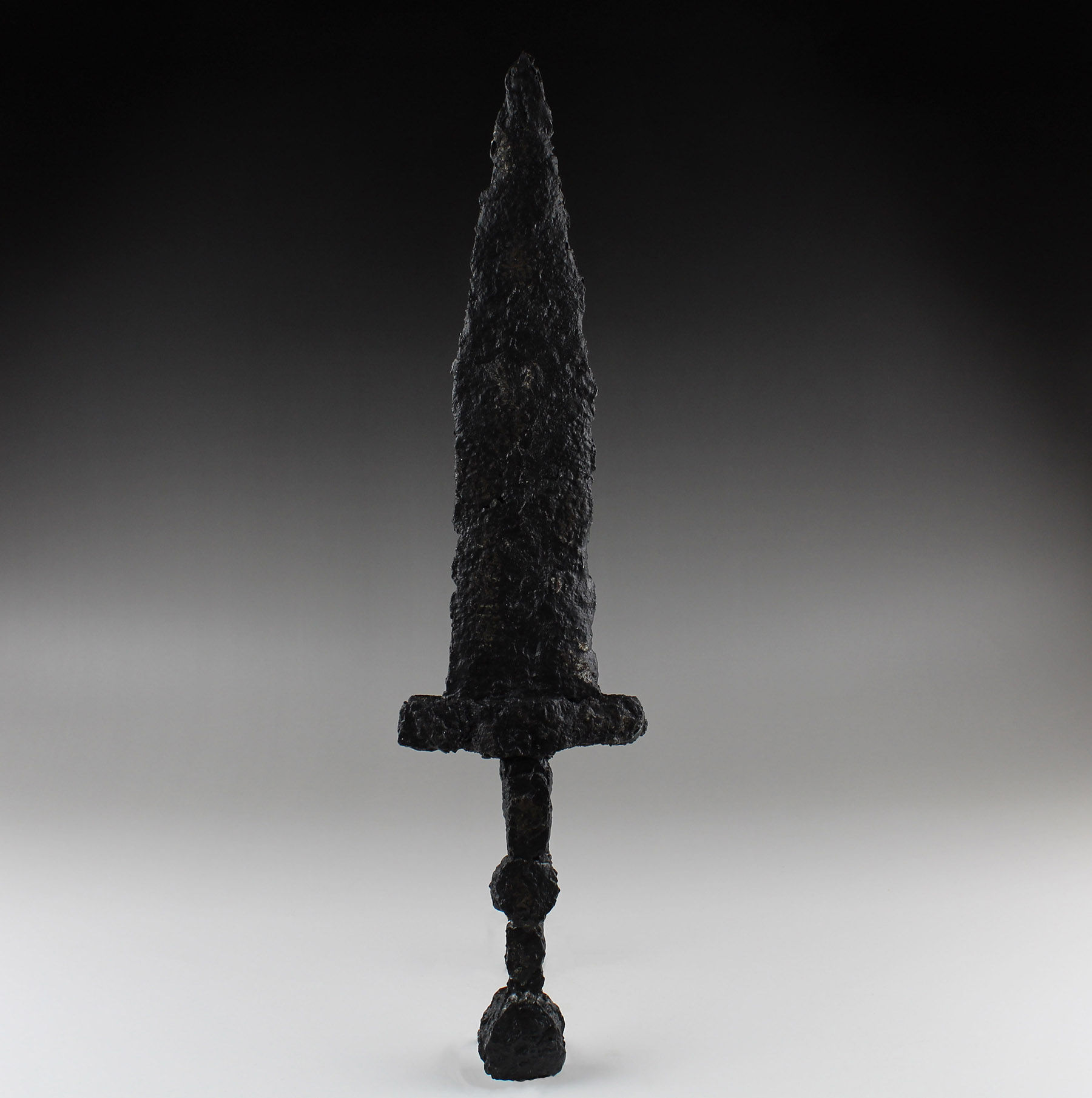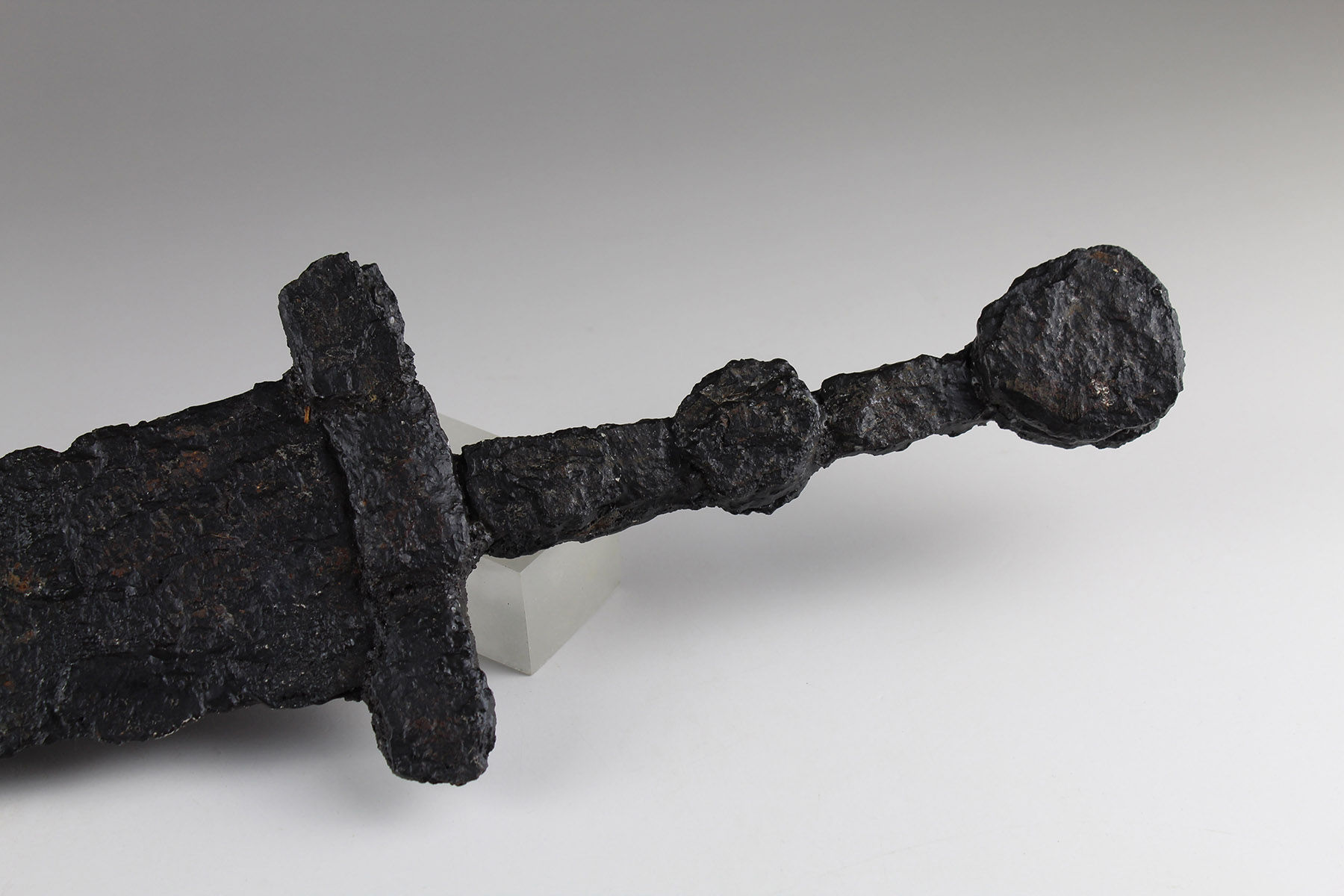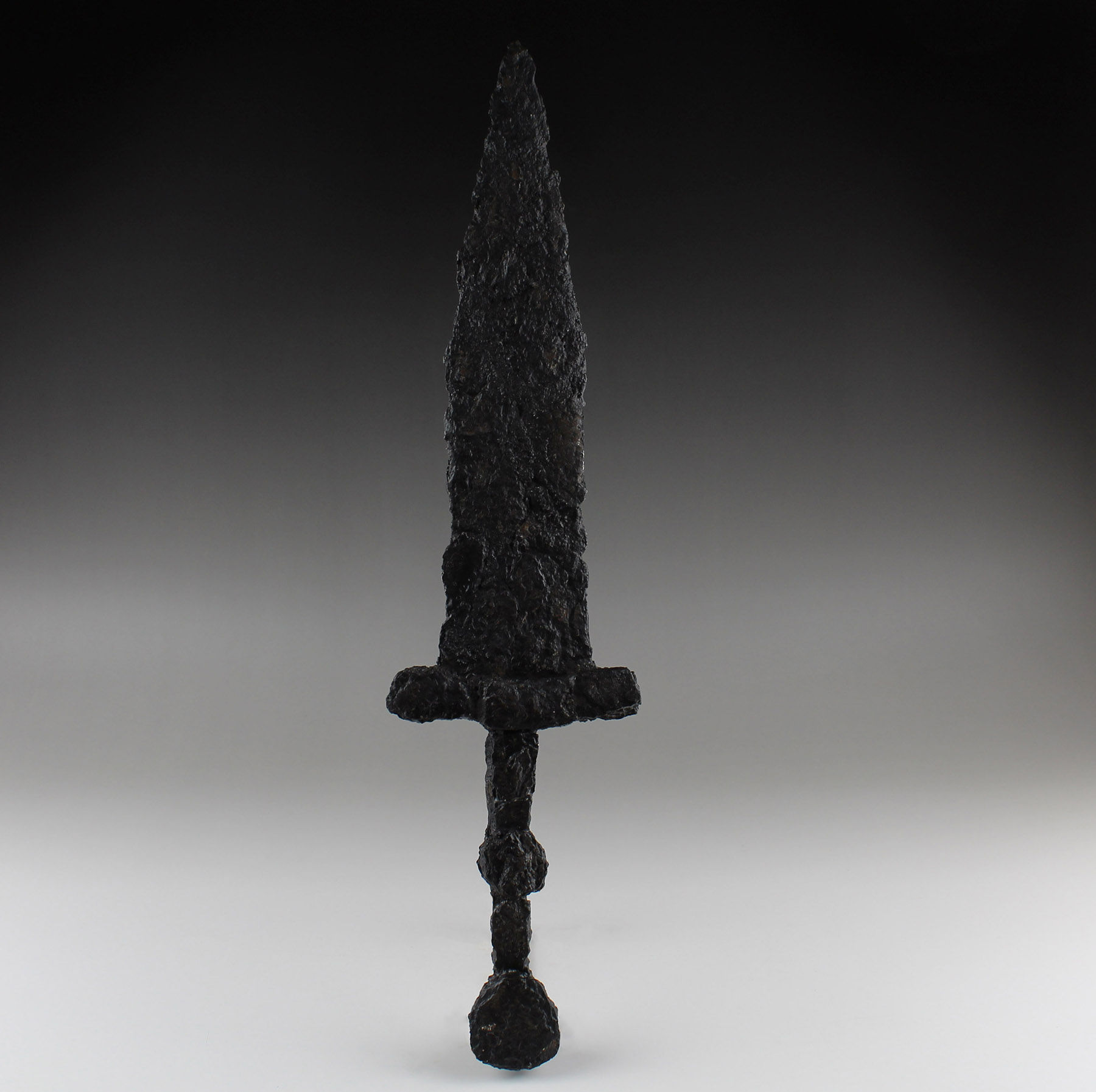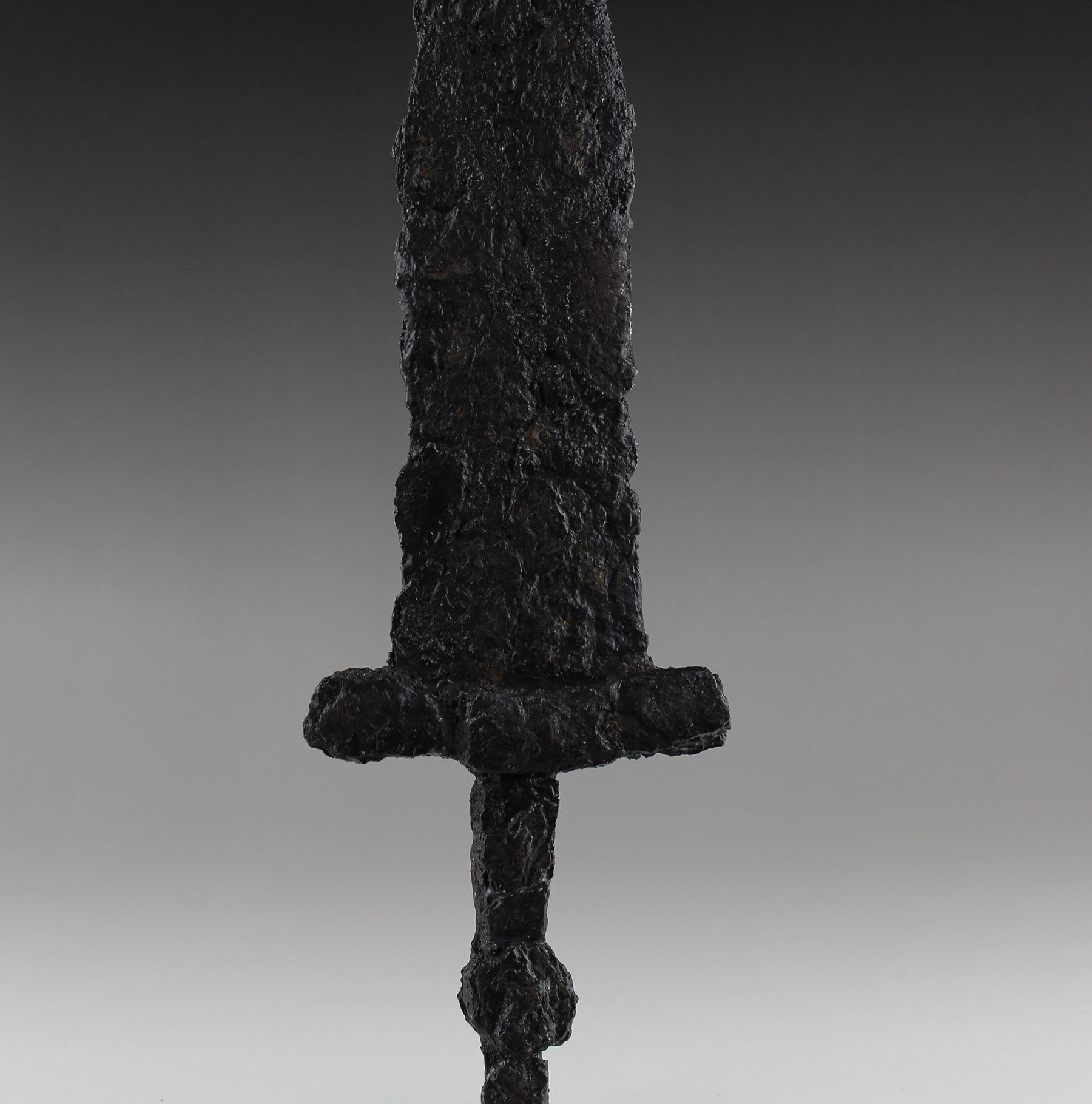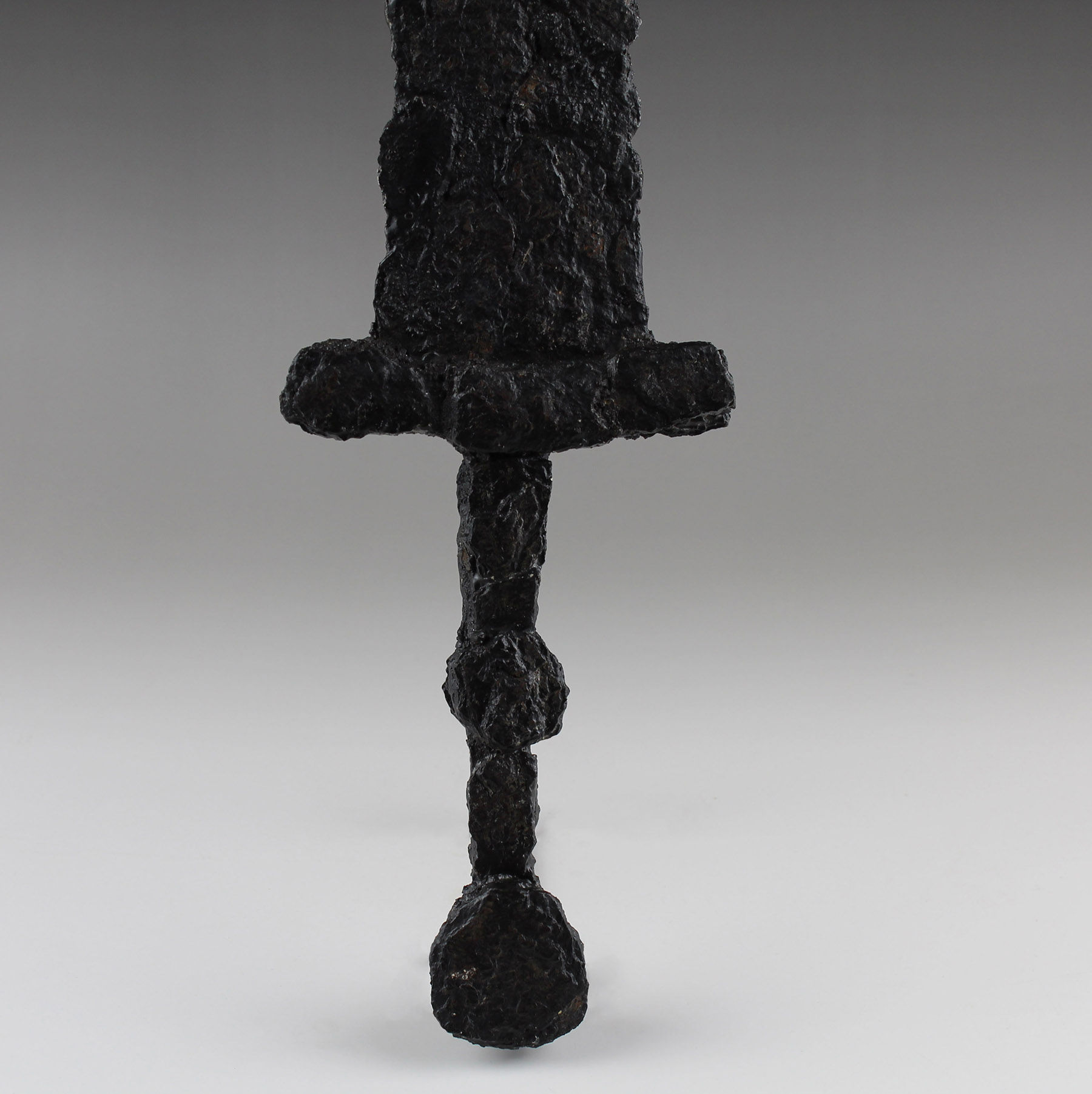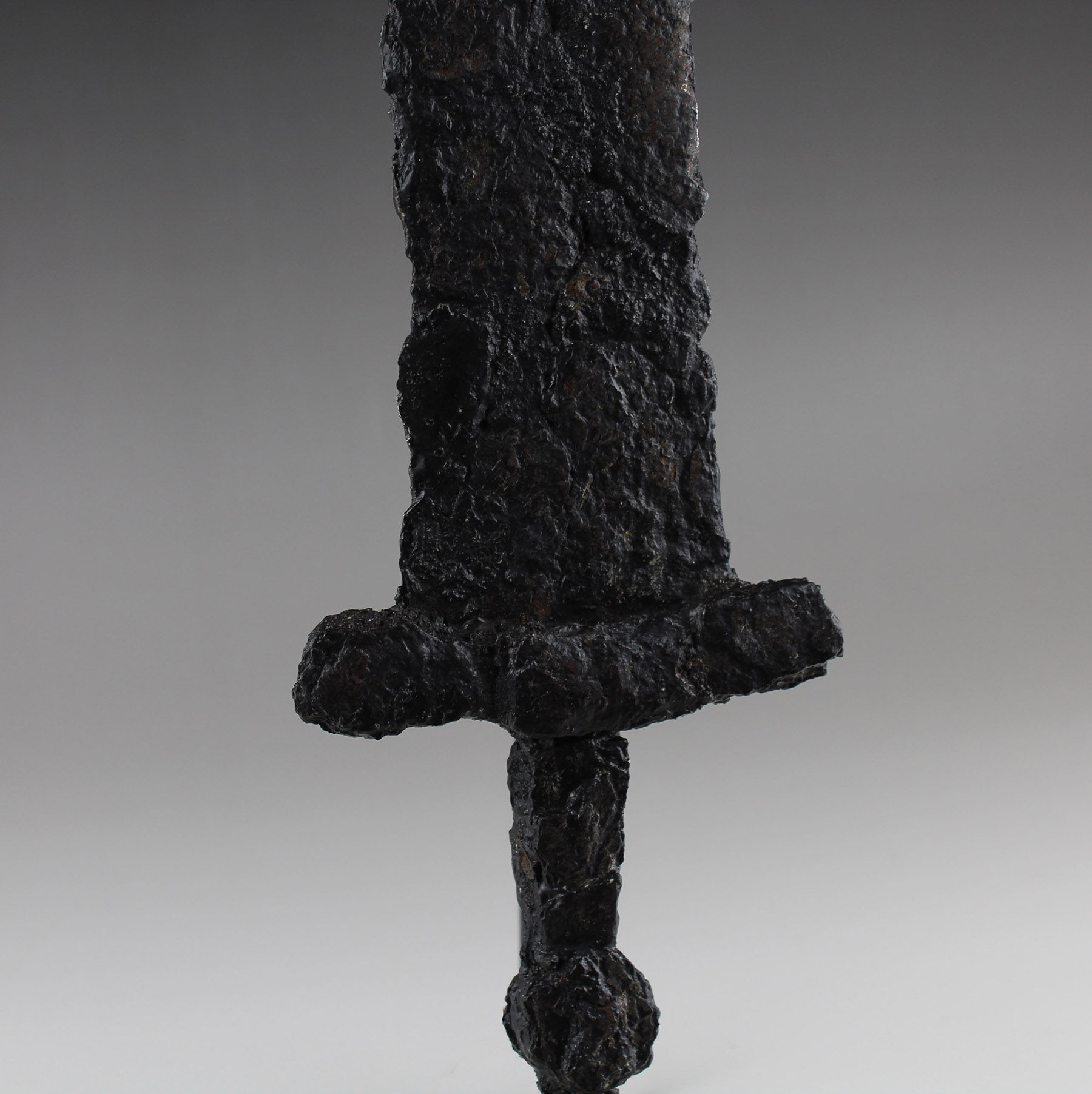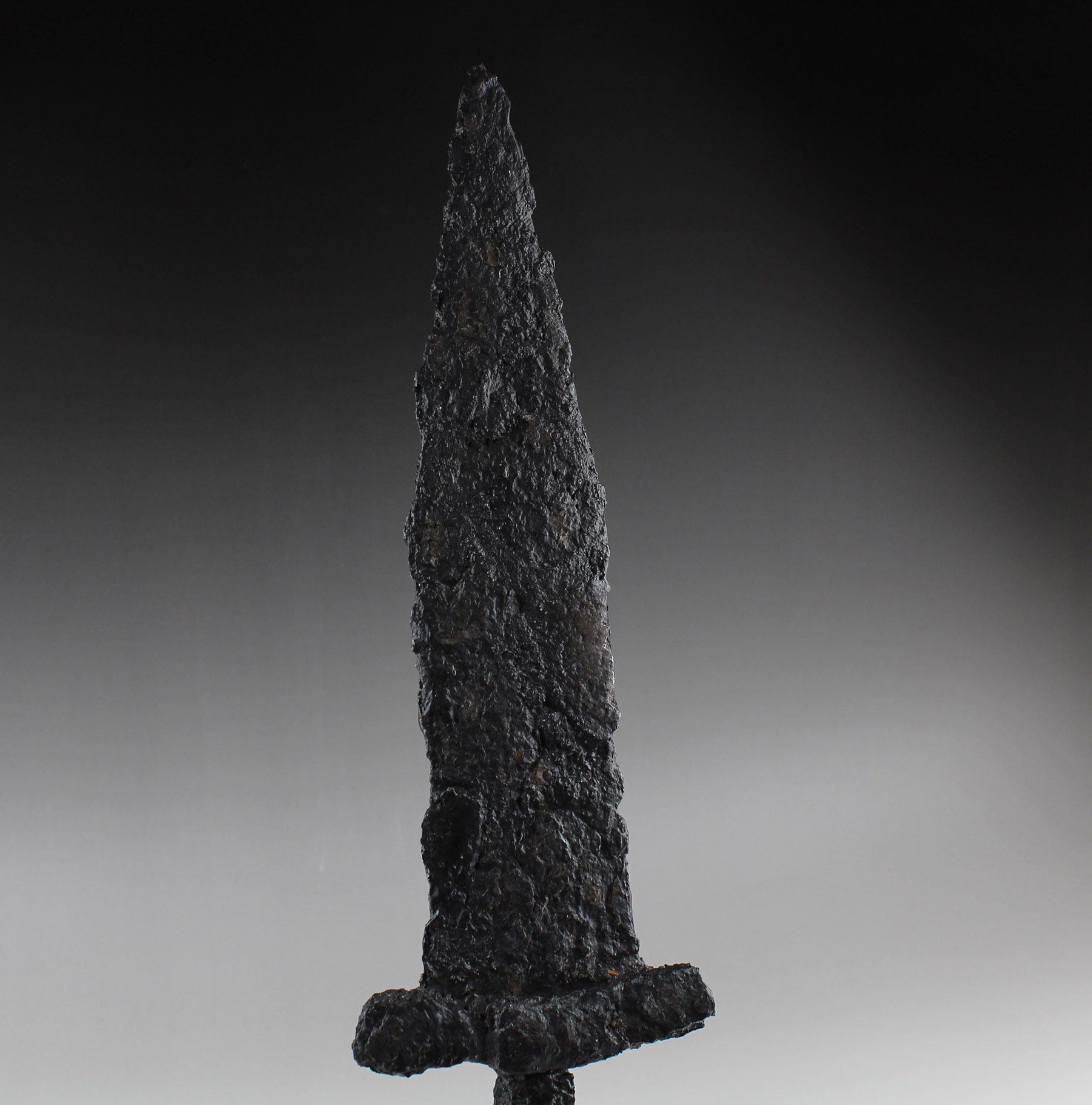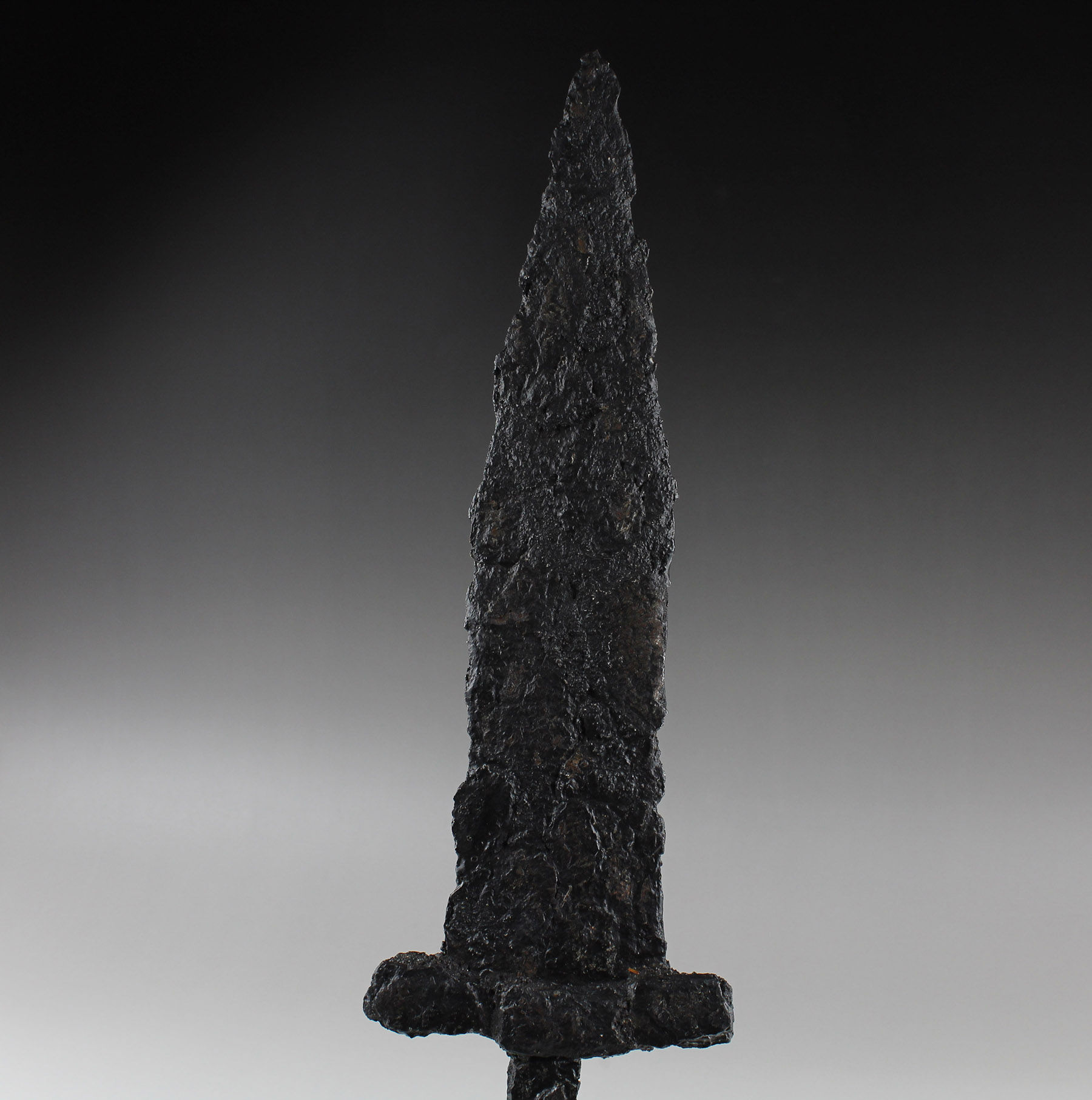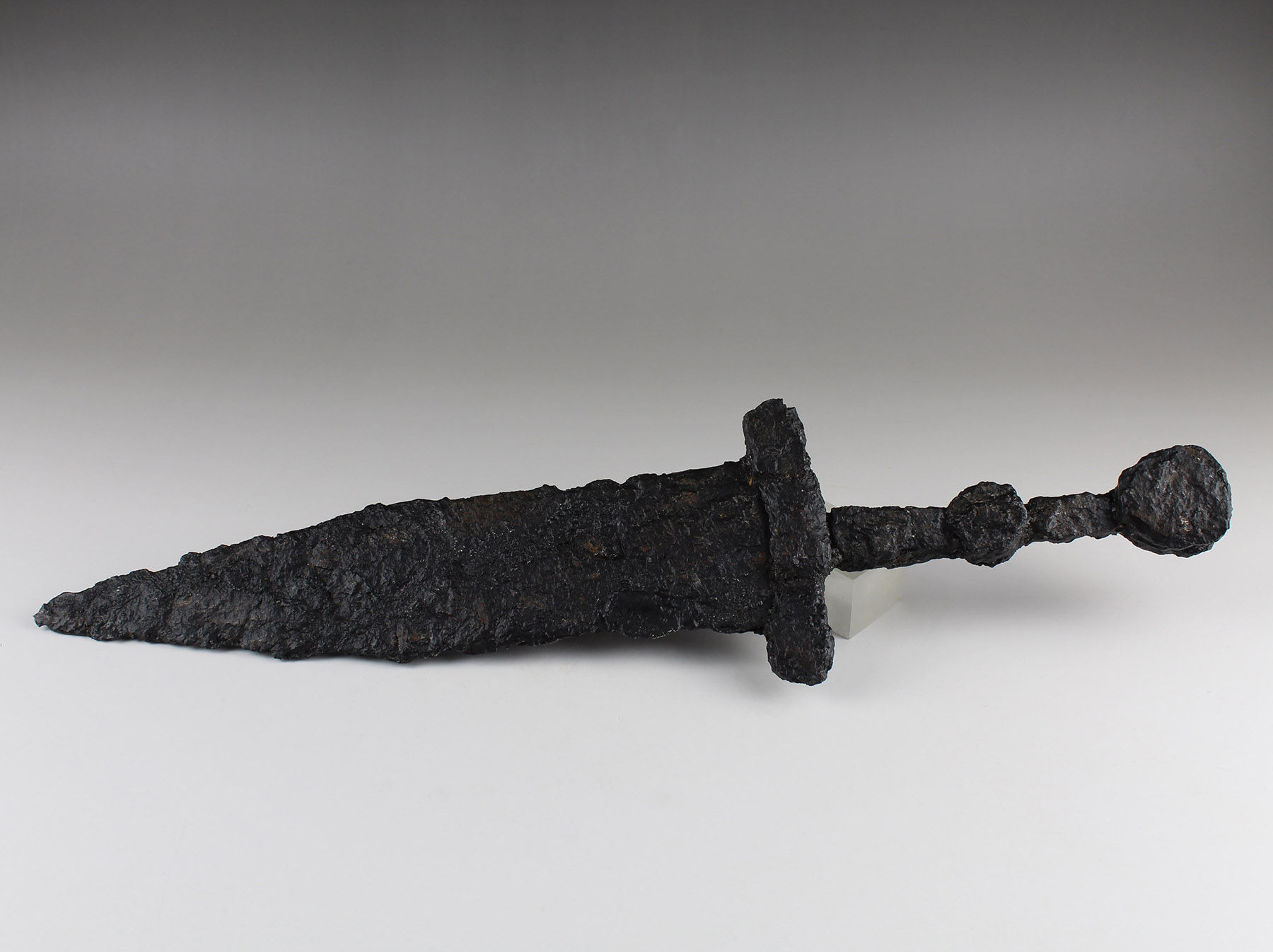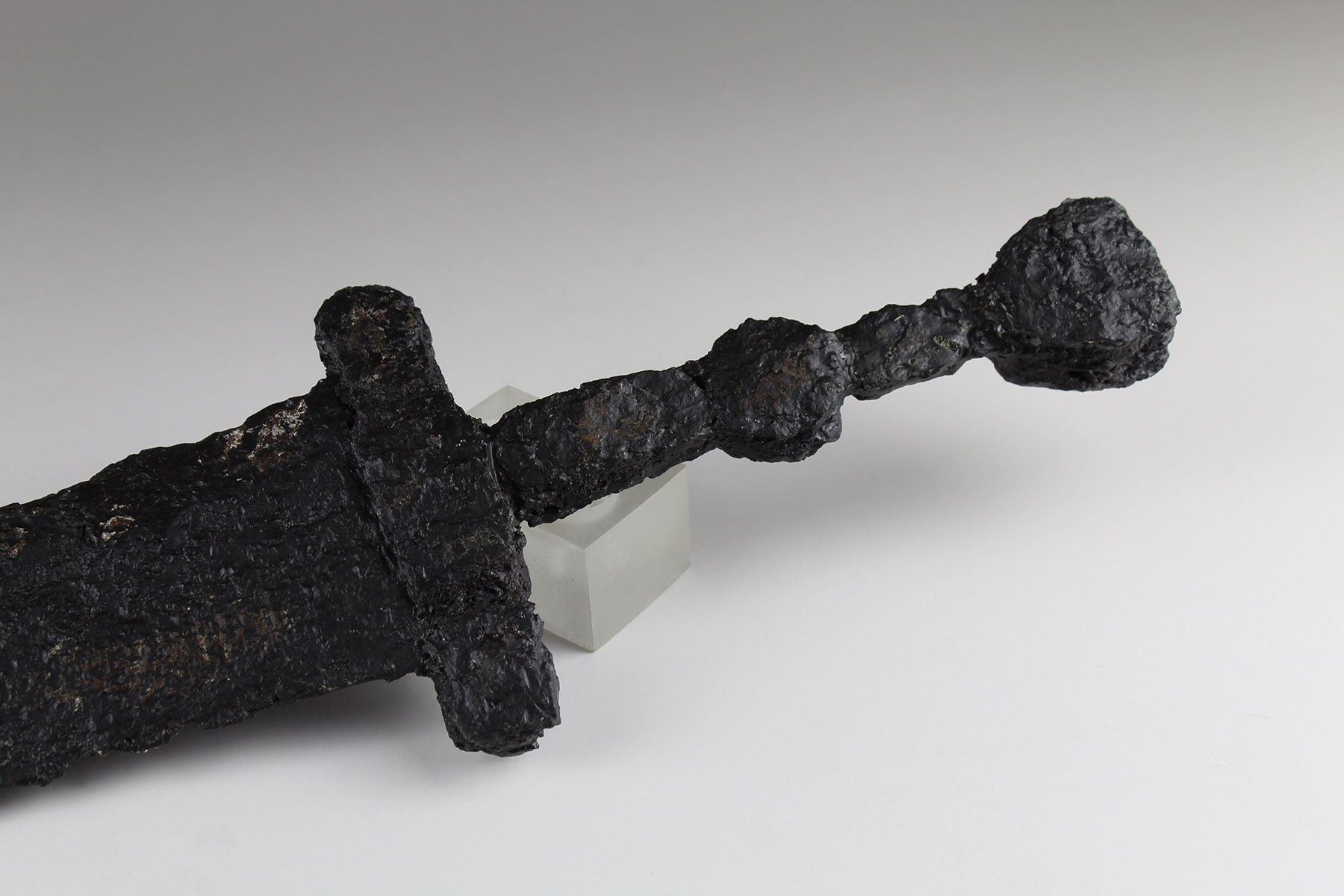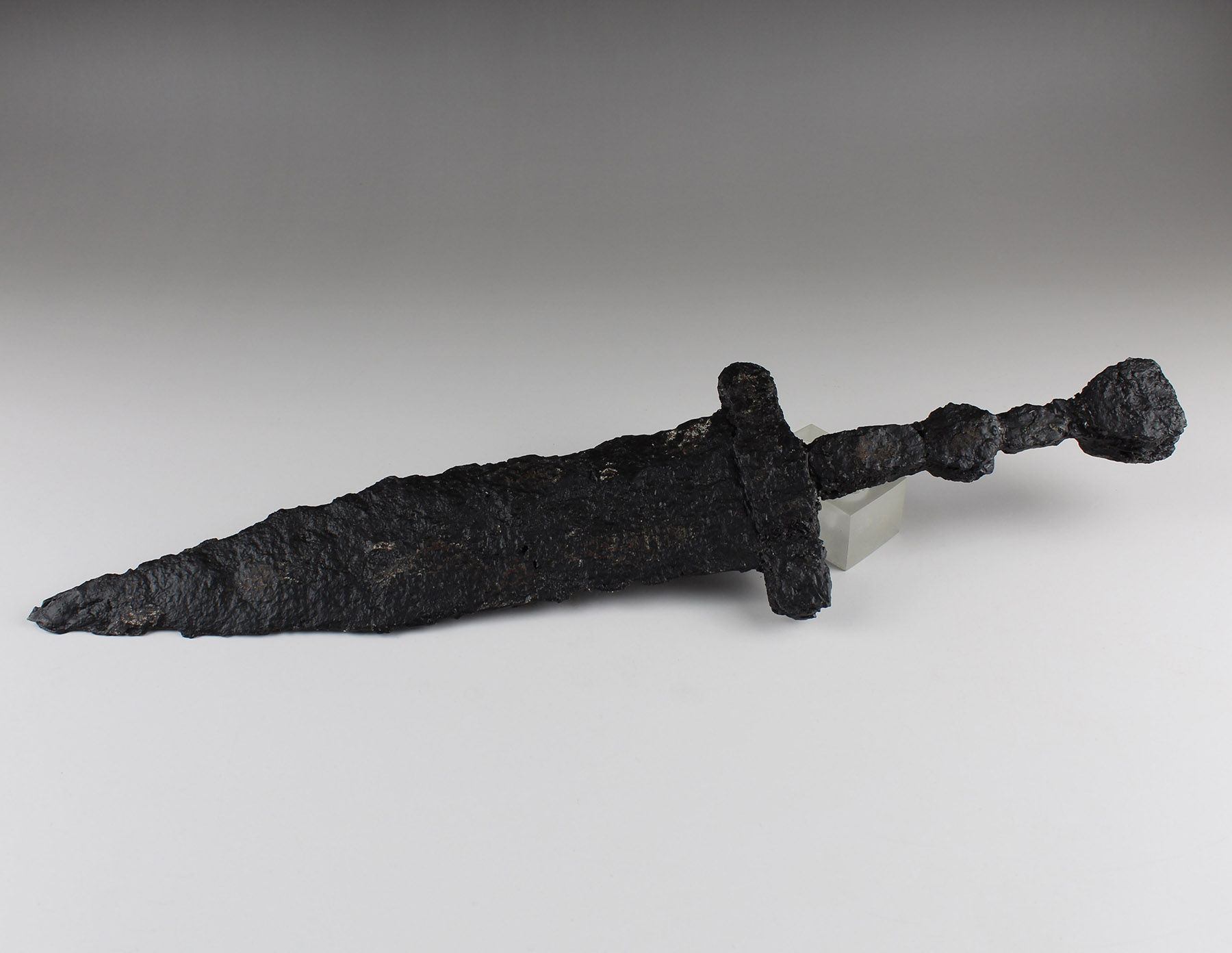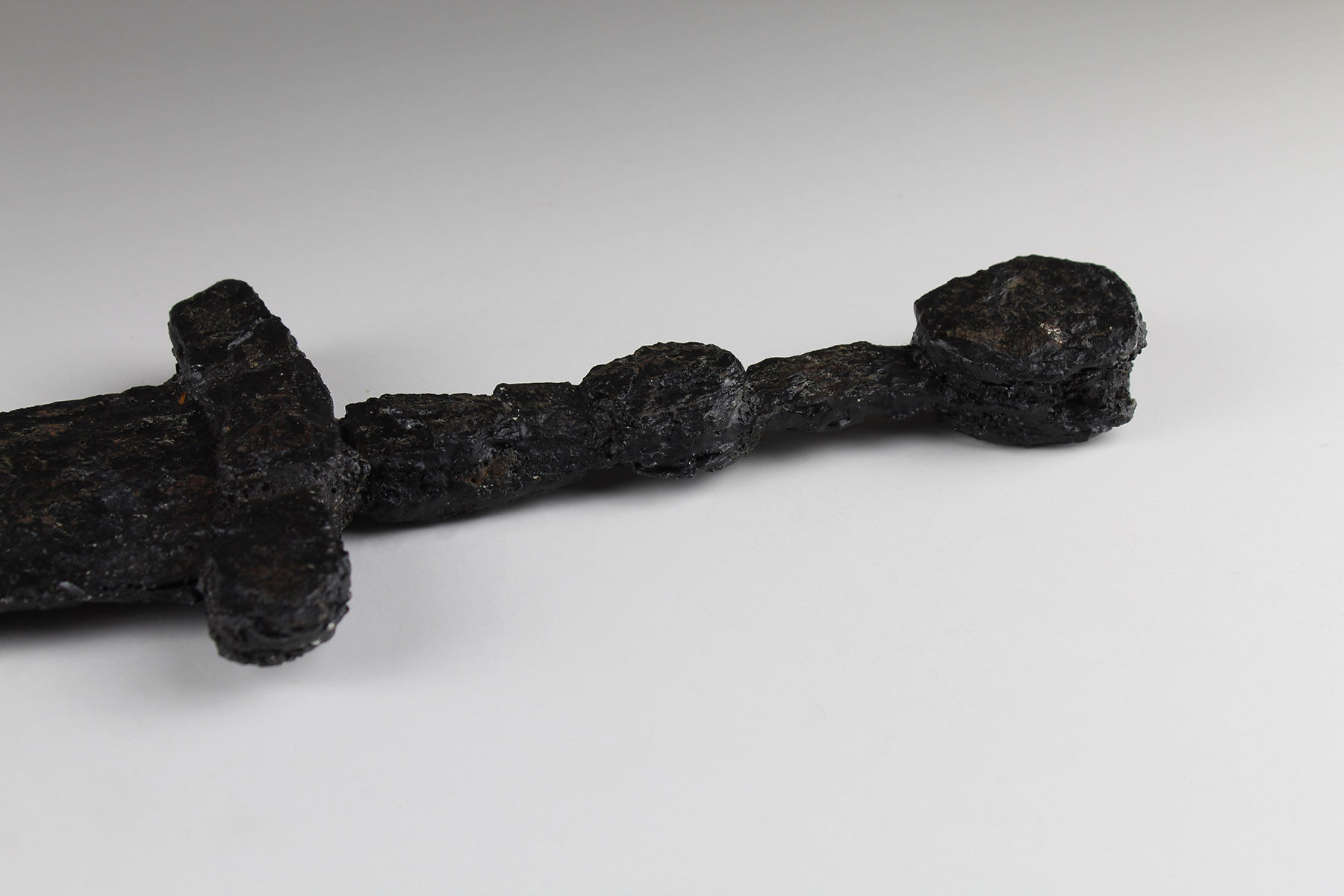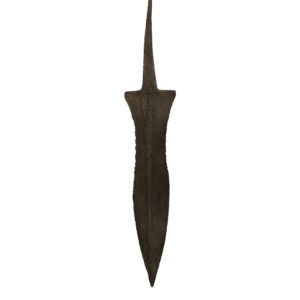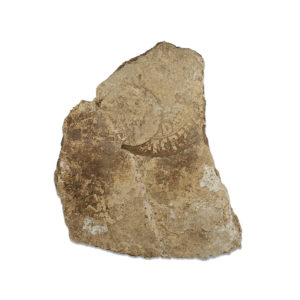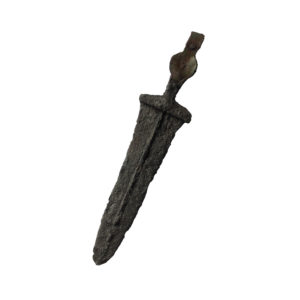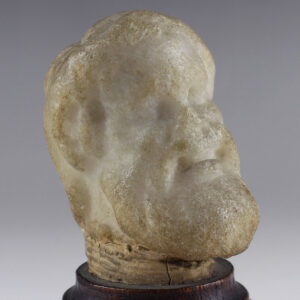Description
| ITEM | Pugio (dagger) |
| MATERIAL | Iron |
| CULTURE | Roman |
| PERIOD | 1st Century A.D |
| DIMENSIONS | 410 mm x 103 mm |
| CONDITION | Good condition. The iron was treated by professional conservators to prevent corrosion. |
| PROVENANCE | Ex Dutch private collection V. E., Ex Christie’s auction house (2010) |
The pugio was a dagger used by Roman soldiers as a sidearm. It seems likely that the pugio was intended as an auxiliary weapon, but its exact purpose for the soldier remains unknown. Officials of the empire took to wearing ornate daggers in the performance of their offices, and some would wear concealed daggers for defense in contingencies. The dagger was a common weapon of assassination and suicide; for example, the conspirators who stabbed Julius Caesar used pugiones. The pugio developed from the daggers used by the Cantabrians of the Iberian peninsula.
By the early 1st century AD, the pugio typically had a large blade. Some pugiones had “leaf-shaped” blades. Other pugiones had narrowed from the shoulders to run parallel to about half the blade’s length before narrowing to a sharp point.
A midrib ran close to the length of each side, either standing out from the face or sunken and defined by grooves on either side. The tang was wide and flat initially and the grip was riveted through it, as well as through the shoulders of the blade. The pommel expansion was originally round but by the early 1st century AD, this was being replaced by a pommel expansion typically of a bulbous, roughly trapezial shape, often topped by three decorative rivets.
Like other items of legionary equipment, the dagger underwent some changes during the 1st century AD. At some time in the first half of the 1st century AD, a rod tang was introduced, and the hilt was no longer riveted through the tang but was instead secured only at the shoulders of the blade. This in itself caused no great change to the pugio’s appearance, although the archaeological evidence strongly suggests that the rod tang was less secure and that handles attached in this way could become detached, a possibility that may be proved by the existence of two surviving pugiones from different sites which both retain replacement handles, one of which is a recycled sword grip. Some of the blades associated with rod tangs were narrower, with little or no waisting, or reduced or virtually non-existent midribs (type “C” blades).


